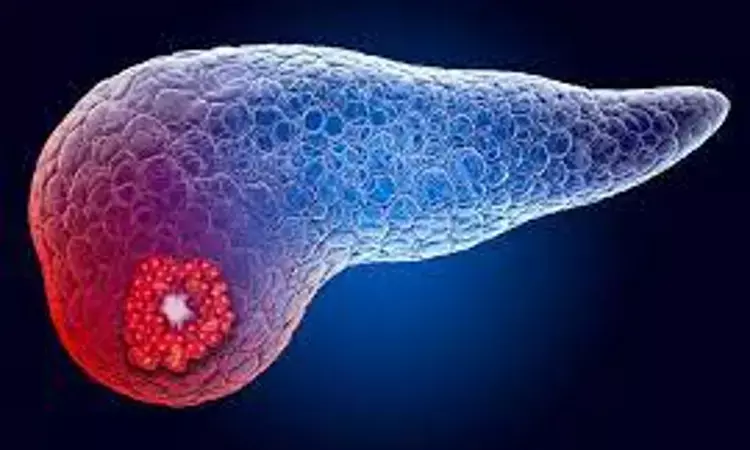- Home
- Medical news & Guidelines
- Anesthesiology
- Cardiology and CTVS
- Critical Care
- Dentistry
- Dermatology
- Diabetes and Endocrinology
- ENT
- Gastroenterology
- Medicine
- Nephrology
- Neurology
- Obstretics-Gynaecology
- Oncology
- Ophthalmology
- Orthopaedics
- Pediatrics-Neonatology
- Psychiatry
- Pulmonology
- Radiology
- Surgery
- Urology
- Laboratory Medicine
- Diet
- Nursing
- Paramedical
- Physiotherapy
- Health news
- Fact Check
- Bone Health Fact Check
- Brain Health Fact Check
- Cancer Related Fact Check
- Child Care Fact Check
- Dental and oral health fact check
- Diabetes and metabolic health fact check
- Diet and Nutrition Fact Check
- Eye and ENT Care Fact Check
- Fitness fact check
- Gut health fact check
- Heart health fact check
- Kidney health fact check
- Medical education fact check
- Men's health fact check
- Respiratory fact check
- Skin and hair care fact check
- Vaccine and Immunization fact check
- Women's health fact check
- AYUSH
- State News
- Andaman and Nicobar Islands
- Andhra Pradesh
- Arunachal Pradesh
- Assam
- Bihar
- Chandigarh
- Chattisgarh
- Dadra and Nagar Haveli
- Daman and Diu
- Delhi
- Goa
- Gujarat
- Haryana
- Himachal Pradesh
- Jammu & Kashmir
- Jharkhand
- Karnataka
- Kerala
- Ladakh
- Lakshadweep
- Madhya Pradesh
- Maharashtra
- Manipur
- Meghalaya
- Mizoram
- Nagaland
- Odisha
- Puducherry
- Punjab
- Rajasthan
- Sikkim
- Tamil Nadu
- Telangana
- Tripura
- Uttar Pradesh
- Uttrakhand
- West Bengal
- Medical Education
- Industry
Extended surveillance among low-risk pancreatic cysts leads to fewer progression to advanced neoplasia

According to a recent study published in Clinical Gastroenterology and Hepatology, a lower incidence of advanced neoplasia was seen during extended surveillance among low-risk, stable-sized branch duct intraductal papillary mucinous neoplasms (BD-IPMNs).
Low-risk branch duct intraductal papillary mucinous neoplasms (BD-IPMN lacking worrisome features (WF) and high-risk stigmata (HRS)), warrant surveillance. However, their optimal duration warrants further investigation, especially among cysts with initial five years of size stability. Researchers aim to systematically review the surveillance of low-risk BD-IPMNs and investigate the incidence of WF/HRS and advanced neoplasia: high-grade dysplasia and pancreatic cancer during the initial
A systematic search (CRD42020117120) identified studies investigating long-term IPMN surveillance outcomes of low-risk IPMN among Cochrane Library, Embase, Google Scholar, Ovid Medline, PubMed, Scopus, and Web of Science, from inception until July 9, 2021. The outcomes included incidence of WF/HRS and advanced neoplasia, disease-specific mortality, and surveillance-related harm (expressed as % patient-years). The meta-analysis relied on time-to-event plots and utilized a random-effects model.
Results:
Forty-one eligible studies underwent systematic review, and eighteen studies were meta-analyzed. The pooled incidence of WF/HRS among low-risk BD-IPMNs during initial and extended surveillance was 2.2% patient-years, respectively. In contrast, the incidence of advanced neoplasia was 0.6% and 1.0% patient-years, respectively. The pooled incidence of disease-specific mortality during initial and extended surveillance were 0.3% and 0.6% patient-years, respectively. Among BD-IPMNs with initial size stability, extended surveillance had WF/HRS and advanced neoplasia incidence of 1.9% and 0.2% patient-years.
A key finding of this study is a lower incidence of advanced neoplasia during extended surveillance among low-risk, stable-sized BD-IPMNs. However, the survival benefit of surveillance among this population warrants further exploration through high-quality studies before recommending surveillance cessation with certainty.
Reference:
The benefit of extended surveillance of low-risk pancreatic cysts after five-year stability: a systematic review and meta-analysis by Ankit Chhoda, et al. published in the Clinical Gastroenterology and Hepatology
DOI: https://doi.org/10.1016/j.cgh.2022.04.025
Dr. Shravani Dali has completed her BDS from Pravara institute of medical sciences, loni. Following which she extensively worked in the healthcare sector for 2+ years. She has been actively involved in writing blogs in field of health and wellness. Currently she is pursuing her Masters of public health-health administration from Tata institute of social sciences. She can be contacted at editorial@medicaldialogues.in.
Dr Kamal Kant Kohli-MBBS, DTCD- a chest specialist with more than 30 years of practice and a flair for writing clinical articles, Dr Kamal Kant Kohli joined Medical Dialogues as a Chief Editor of Medical News. Besides writing articles, as an editor, he proofreads and verifies all the medical content published on Medical Dialogues including those coming from journals, studies,medical conferences,guidelines etc. Email: drkohli@medicaldialogues.in. Contact no. 011-43720751


